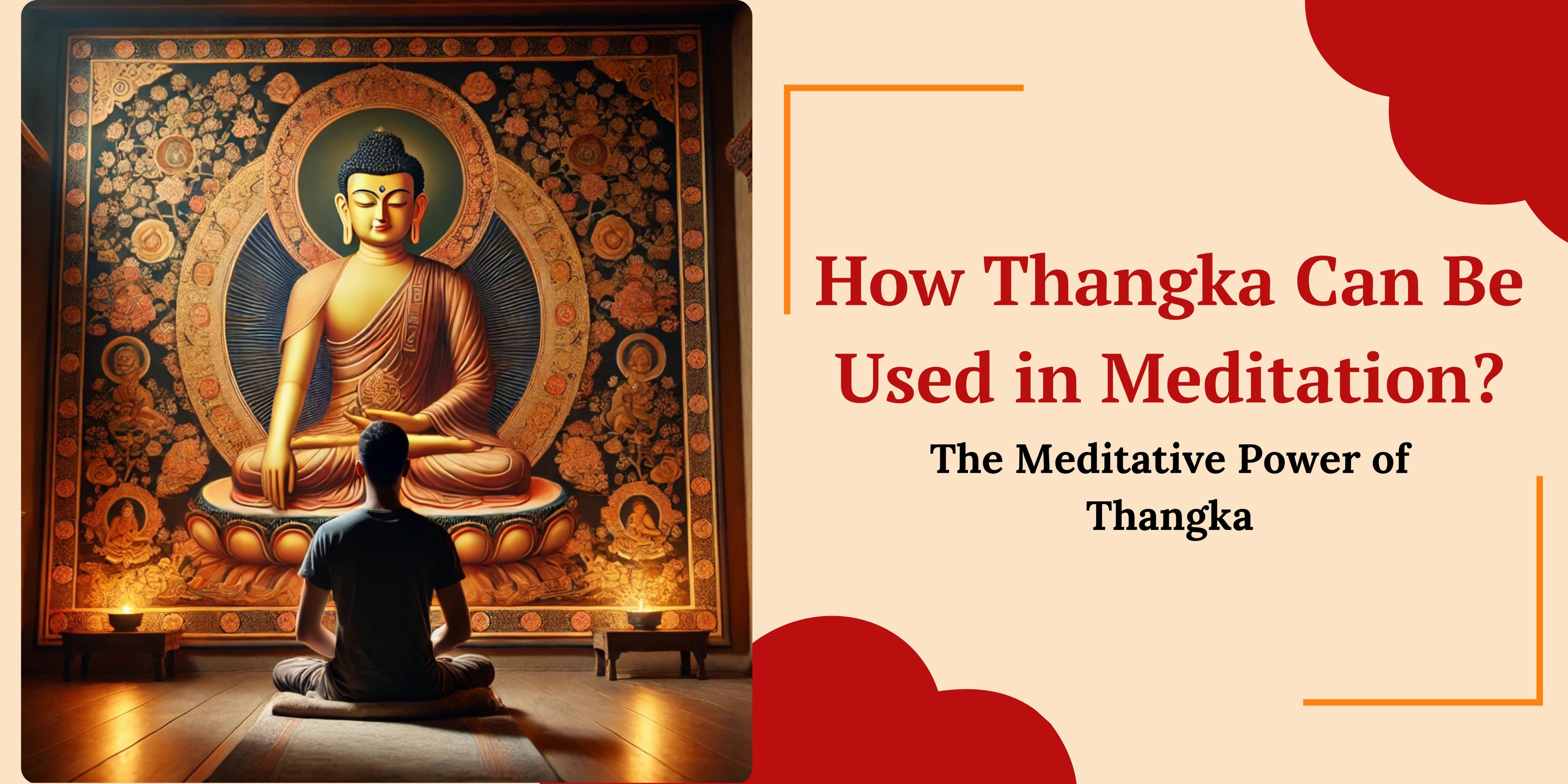
Mantra Mandala: The Meaning and Significance of 'Om Mani Padme Hum'
Mantras and mandalas are two of the most spiritual and powerful symbols of Tibetan Buddhism, both having deep spiritual significance. together form a sacred geometric symbol of spiritual power and wisdom. Among these, few mantras hold as much reverence and mystique as Om Mani Padme Hum, an ancient Buddhist mantra often depicted within intricate mandalas. This mantra is profoundly significant as a path to enlightenment, compassion, and inner peace. Whether you are a seasoned practitioner or a beginner in the world of mantras and mandalas, understanding the meaning of Om Mani Padme Hum gives an insight into its potential to transform.
What is Om Mani Padme Hum?
Om Mani Padme Hum, a Six Syllable Mantra sacred in the tradition of Tibetan Buddhism, is also called the Mantra of Compassion and is associated with the Bodhisattva of Compassion, Avalokiteshvara (Chenrezig in Tibetan).The mantra is supposed to have the entire teaching of the Buddha and is recited by millions of individuals worldwide.

- Om (ॐ) – Om represents liberality that melts ego and pride. It cleanses attachment to luxury and comfort, causing practitioners to develop wisdom and compassion in the Pure Realm of Potala (the home of Chenrezig).
- Ma (म) – Ma represents moral behavior turning around greed for pleasure and jealousy. It cleanses minds that are hostile and competitive and brings out compassion and aligns practitioners with Chenrezig's qualities
- Ni(णि) – Ni represents patience, the antidote to desire and attachment. It purifies the human desiring faculty and creates harmony, with the goal of reincarnation in Dewachen, the Pure Land of Amitabha Buddha.
- Pad (प) – Pad represents diligence that opposes ignorance and bias. It purifies the animal's instinctual nature and creates clarity, perseverance and composure.
- Me (द्मे) – Me signifies renunciation that helps practitioners renounce greed and possession. It cleanses the suffering of beings tortured by hunger and thirst, bringing about inner peace and liberation from attachment.
- Hum (हूं) – Hum signifies wisdom that annihilates anger and hatred. It helps cleanse suffering in the nether world of the hells and bring about great compassion, inducing practitioners to advance towards enlightenment on Chenrezig's lotus throne.
The Significance of the Mantra
Besides Buddhist meditation, chanting or meditating on Om Mani Padme Hum has a profound effect that extends to all areas of life. It causes clear thinking and calmness of mind so that one can face challenges with confidence and focus. The mantra also creates compassion and softness and allows a better understanding of others. Its vibrations heal and purify negative emotions, giving rise to balance and happiness. As a path to enlightenment, chanting this holy mantra purifies the mind, body, and speech so one can overcome ego, attachment, and ignorance. It is more than a mere chant; it is an act of compassion which generates kindness and selflessness in everyday life. It is also referred to as a guardian and a healer, who brings peace and safeguards individuals against physical injury. Om Mani Padme Hum in its transformative energy is a guide to mindfulness, elevated awareness, and the bliss of life.

The Role of Mandalas in the Practice
Mandalas are sacred geometric designs symbolizing the universe as a meditation and spiritual growth tool. When combined with the Om Mani Padme Hum mantra, they are amplified, enhancing concentration, consciousness, and inner peace. A mantra mandala is typically highly intricate regarding patterns, lotus flowers, and depictions of Avalokiteshvara, thus being an especially potent visual aid to meditation—practitioners can focus more by earnest gaze on the mandala with recitation of the mantra. The circular shape represents wholeness and interconnectedness, which symbolizes the mantra nature of compassion and wisdom. Also, contemplation of a mantra mandala brings about a space that is sanctified, where there is serenity and reverent spirituality. Aside from contemplation, such mandalas serve as a lucky symbol, with mantra energy said to ward off evil. Lastly, both the mandala and mantra form a directional influence in the enlightenment path, representing a visual as well as sonic direction toward serenity, knowledge of self, and spiritualization.
How to Incorporate Om Mani Padme Hum and Mantra Mandalas into Your Practice?
- Chanting: Begin by chanting the mantra aloud or mentally. Focus on the sound and vibration, allowing it to resonate inside you.
- Meditation: Use a mantra mandala as a meditation anchor. Visualize the meaning of the mantra while chanting, and allow the divine geometry of the mandala to ground your mind.
- Mindfulness: Carry the mantra with you during the day, repeating it when you are stressed or reflective. This practice helps you stay present, calm your mind, and bring awareness to your thoughts and emotions.

Whether you're stuck in traffic, taking a break at work, or simply pausing for a deep breath, chanting the mantra can serve as a gentle reminder to stay centered, let go of negativity, and approach each moment with peace and compassion.
The Mantra Mandala is not merely an artistic or spiritual symbol but a profound reflection of wisdom, compassion, and the path to enlightenment. As a meditation tool, prayer symbol, or even a daily reminder of inner peace, its significance transcends cultures and centuries. By adopting this sacred mantra and its connection to mandalas, we can cultivate compassion, purify our minds, and awaken the jewel of enlightenment within us.



